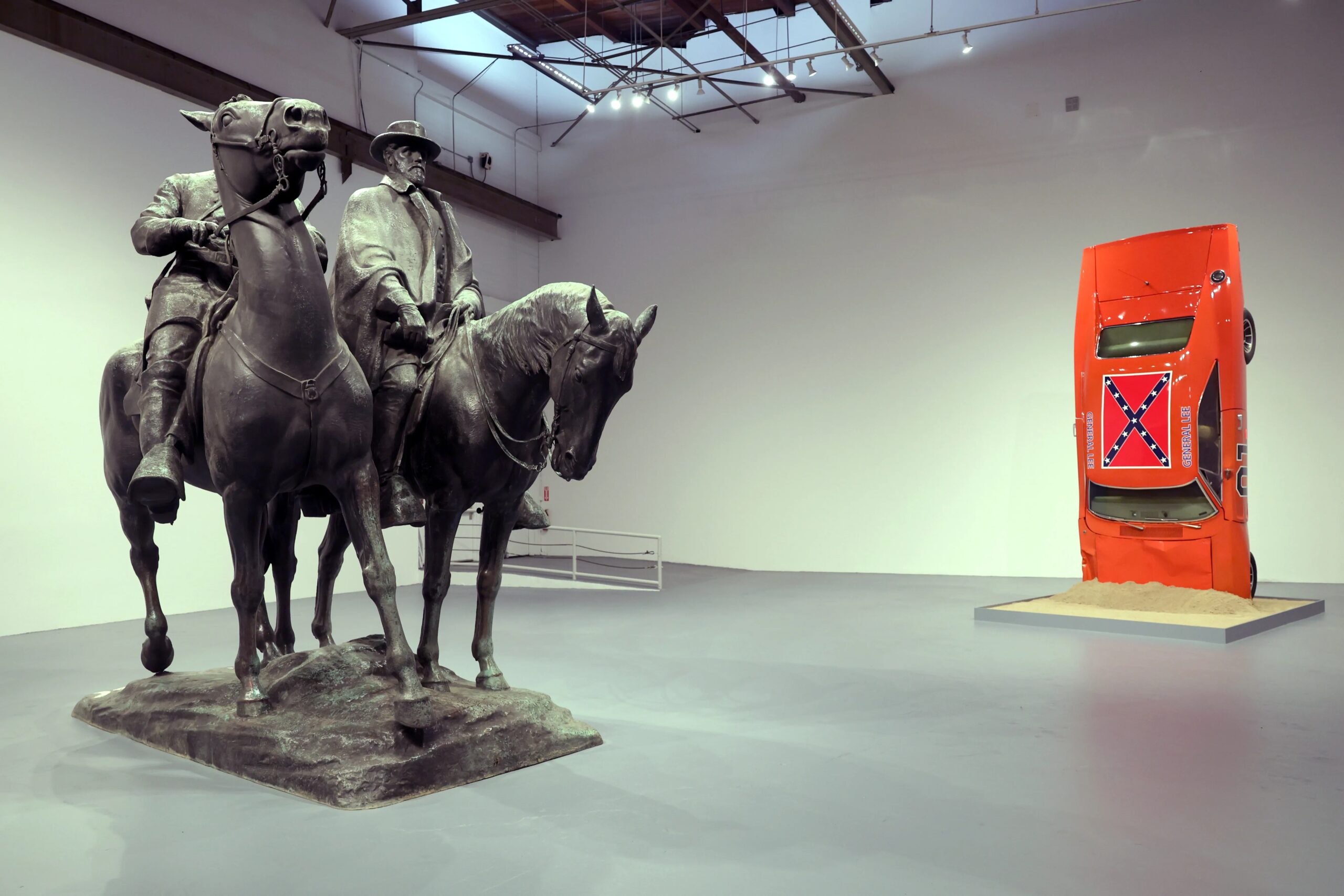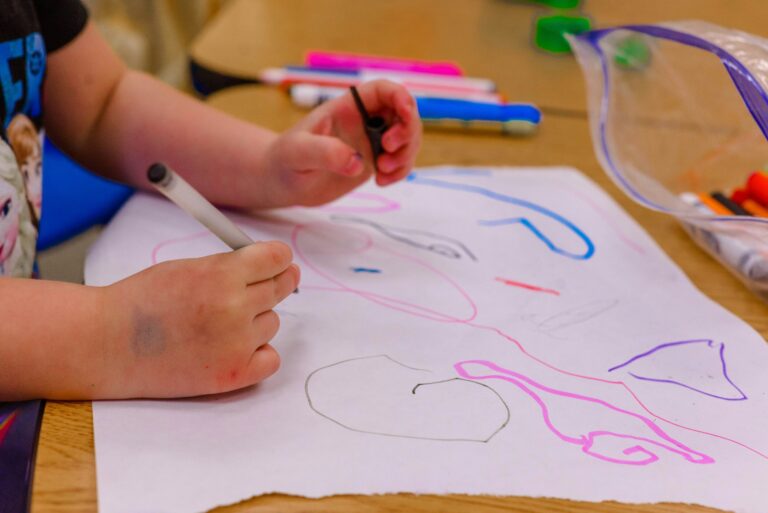

Some say it began in 2015, when Dylann Roof walked into the Emanuel African Methodist Episcopal Church in Charleston, South Carolina, and shot and killed nine worshippers in cold blood. According to survivors of the massacre, before opening fire, Roof told them, “Y’all are raping our women, and y’all are taking over the country, and you have to go.”
It surprised few that racism was alive and well in the U.S., but many were shocked at the overt racism that characterized Donald Trump’s first term, notably when he referred to white supremacists as “some very fine people” following the Unite the Right rally in Charlottesville, Virginia, which left one dead. On that night in 2017, white supremacists gathered around a monument of Stonewall Jackson, mounted on his horse. Such tributes to Confederate figures had become targets of groups like Black Lives Matter and others who saw them as symbols of a racist cause defending the Confederacy’s “peculiar institution” of slavery. Since then, roughly 300 monuments have been decommissioned in cities across the U.S., most of them in the South.
Those who take pride in the Confederacy’s Lost Cause argue that decommissioning public monuments amounts to erasure. But the only thing being erased with the show, “Monuments” at MOCA Geffen and The Brick through May 3, 2026, is the myth of valor. “These objects are not history. They have a history. But these objects are about myth,” says The Brick curator Hamza Walker, who teamed with MOCA’s Bennett Simpson on the show. “People talk about recontextualization. So, putting plaques next to them, that’s one thing, more didactic materials.” That’s what W.E.B. Du Bois had in mind when he argued in a 1931 issue of The Crisis: “If Confederate monuments had told the truth, they would have included inscriptions that read: ‘Sacred to the memory of those who fought to perpetuate human slavery.’”


The MOCA Geffen houses 18 decommissioned monuments, including bronze ingots that were once a figure of Robert E. Lee, standing proudly in Charlottesville. Many bear the marks of ignoble demise, like the red paint veiling Beaux-Arts master Frederick Wellington Ruckstuhl’s 1903 piece, Confederate Soldiers and Sailors Monument. Like the rest, its presence is powerfully imposing within the confines of a gallery. Recontextualizing these monuments are commissioned artworks by practitioners such as Bethany Collins, Abigail DeVille, Karon Davis, Stan Douglas, Kahlil Robert Irving, Cauleen Smith, Kevin Jerome Everson, Walter Price, Davóne Tines, Julie Dash and Kara Walker. Additional artworks by Leonardo Drew, Torkwase Dyson, Nona Faustine, Jon Henry, Hugh Mangum, Martin Puryear, Andres Serrano and Hank Willis Thomas are on loan from private collectors and art institutions.
Sculptor J. Maxwell Miller’s 1917 monument, Confederate Women of Maryland, stands in conversation with Jon Henry’s Stranger Fruit series of photos that pose Black mothers with their fallen sons in Pietà-like compositions that mimic the monument, giving voice to the many who have lost loved ones through violence and institutional racism.


A powerful counterbalance to all of the monuments is Hugh Mangum’s 1910 portrait series of average African American citizens, nameless here but seen in a way that was rare in the Jim Crow South, when most of the monuments were erected. Mangum’s photos stand in stark contrast to Andres Serrano’s color portraits of anonymous Klansmen who, in their shame, hide behind hoods. A rebuke lies in Edward V. Valentine’s pink-splattered likeness of Jefferson Davis from 1907, which used to stand in Richmond, Virginia.
Proponents of the Lost Cause argue that the war had nothing to do with slavery, noting that only 5.67 percent of the white population were enslavers and that the conflict was over states’ rights and safeguarding Southern culture. This insignificant percentage ignores the fact that adjustments accounting for the family unit would put enslavers closer to 30.8 percent, and roughly 50 percent in South Carolina and Mississippi. Without slavery, the Southern economy was unsustainable. Others argue that plantation life was characterized by bucolic peace and harmony. Such nostalgia for a fictional time and place was captured in silhouettes of the era, often depicting children at play and contented workers in the fields. In artist Kara Walker’s hands, such nostalgia is shattered by silhouettes of graphic violence and rape committed against slaves, powerfully belying the myth behind the Lost Cause and confronting viewers with the truth.
It’s what makes Walker the perfect candidate to take on the Stonewall Jackson monument that stood at the heart of the 2017 Unite the Right rally. She and her team disassembled the bronze sculpture, then reassembled it as a grotesque centaur, combining elements of Jackson with those of his gelding, Little Sorrel.


“I wanted to deal with the material in a way that was also about the act of separation—separating man from horse and man from myth,” Walker said in an interview with Hamza about the new piece entitled Unmanned Drone. “The stuff we’re parsing through—the Lost Cause, Reconstruction, Jim Crow, these symbolic assertions of white supremacy—it’s in the bloodstream, in a way. That’s really a horror.”
The Trump administration has appointed only two Black people among the 98 Senate-confirmed nominees for major government departments. It has attacked cultural and educational institutions that support DEI initiatives and has targeted agencies with many minority workers for cuts, disproportionately affecting Black federal employees. This comes at a time when the Supreme Court is believed to be poised to gut the Voting Rights Act of 1965, effectively nullifying Black votes through redistricting. The current iteration of racial strife might have begun with Dylann Roof, but its roots go back all the way to 1619 and the arrival of the first slaves on U.S. soil.
“Sometimes you’re not even aware of the ebb and flow. And suddenly, to watch the dismantling of things that I thought were sacrosanct, that’s the ebb and flow. This moment connects also to that larger arch,” offers Hamza. “The Lost Cause as an ideology is still here.”


More exhibition reviews







